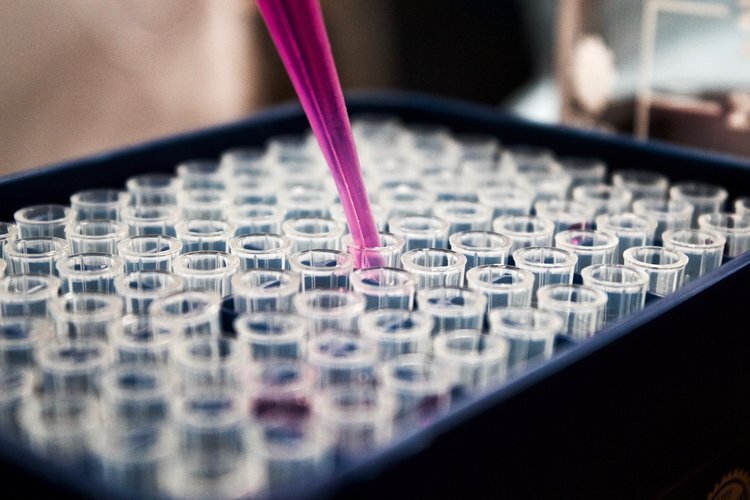I won’t sugar coat it, SIBO treatment is difficult and so individual. And since there isn’t a one-size-fits-all approach, it’s easy to make mistakes even when you’re working with the most experienced practitioner.
I certainly ran into my fair share of regrets and things I wish I could do over when it came to treating my own SIBO.
Which is why I’ve written down my top four SIBO treatment mistakes for you to learn from. In the hopes that your road to healing SIBO will be free of these similar road blocks.
I hope that by seeing what I wish I could have done differently, it will help you when making decisions in your own treatment plan. And if you do need additional assistance crafting your own SIBO treatment plan, I’m now taking one-on-one clients! Just fill out this quick application and schedule your free 30-minute Discovery Call to get started.

SIBO Treatment Mistake #1: Not Testing for SIBO Before Treating for SIBO
At the very beginning of my gut healing journey, I was under the care of a local nutritionist.
This was way back before I knew what gut health really meant. I’ll I knew was that I had Celiac Disease and that I needed to eat gluten free (and if that meant loading up on gluten free pasta and sweets every weekend, that was fine with me).
She recommended that I run a food sensitivity test, and a stool test to look at potential dysbiosis in my gut.
When the results of the stool came back it showed low levels of beneficial bacteria, along with some other markers of GI distress.
From those results, my nutritionist told me that I had SIBO and that I needed to start a strict SCD diet and an antimicrobial protocol right away.
A few years later, when I was much more knowledgeable about gut health and SIBO testing, I knew that diagnosing SIBO from a stool test is not possible.
You need the results of a SIBO specific breath test in order to determine if there is an overgrowth of bacteria in the small intestine (which characterizes SIBO).
Now, I’m totally not faulting my nutritionist – maybe she’s seen a clinical pattern where people with similar results as me had SIBO, I don’t know.
But what I wish I had done before I went down the rabbit hole of treating, testing, and retreating my SIBO was take a SIBO breath test before I even started treating.
That way I would have had a baseline to compare all of my subsequent tests to in order to determine if my treatments were in fact making a difference in the gas levels.
And there’s also a nagging question in the back of my mind whether or not a SIBO test before all of my treatments would have actually been positive…
It probably would have, but we’ll never know.
And that’s why I urge you to always test before starting a treatment protocol!
I have different opinions about the necessity to retest after each individual course of treatment, but knowing what you’re treating before you start treating it is critical!
And, there are two different types of SIBO (methane and hydrogen), which are treated in two different ways.
So, if you don’t test before you start treatment, you’ll have no idea what herbs or antibiotics to use in your protocol.

SIBO Treatment Mistake #2: Not Supporting My Gut Before Trying to Kill the Overgrowth
My first round of herbal antimicrobials to treat my SIBO was a hot mess.
I couldn’t tolerate anything, and had to stop the protocol after only a few days.
In retrospect, I think the reason that this first protocol was so difficult for my body to handle was because my gut was just in such rough shape that it couldn’t take any more stress.
Yes, gut infections are a stressor in themselves, and then adding antimicrobials to the mix is even more of a stress.
I wish I would have taken the time to really understand what was going on in my gut, and not just jump on the “let’s kill everything” wagon.
Starting treatment using a few SIBO friendly, gut supporting supplements – like a spore-based probiotic (get 15% off the brand I use with code NINJA15), collagen peptides, l-glutamine, or colostrum – would have done wonders for my overall health as well as my gut’s ability to handle a round of antimicrobials.
Antibiotics or antimicrobials aren’t the only option when trying to get rid of SIBO.
Many practitioners start with changes to diet and adding in SIBO friendly probiotics (which you can get for 15% off with the code NINJA15) in an attempt to crowd out the overgrowth, before going in with the heavy hitters (which can really damage the rest of the bacteria in your gut too).
Now, I’m working so hard to rebuild my microbiome by eating all the probiotic containing foods I can, taking a good probiotic, and making sure my diet consists of a lot of prebiotic fibers (found in veggies like asparagus, broccoli, and onions).
From recent stool tests, I know that my microbiome is lacking in beneficial bacteria.
This not only affects my gut function and allows room for overgrowths of potentially pathogenic bacteria, but can have an affect on my immune system and other areas of my health as well.
I can’t help but wonder if I had taken a more gentle, gut friendly approach to treating my SIBO, then my gut and microbiome would be in better shape today.

SIBO Treatment Mistake #3: Staying Low-FODMAP for So Long
The low-FODMAP diet is one that restricts foods containing carbohydrates that are poorly absorbed by the small intestine.
By restricting these foods that our bodies can’t easily digest (and that end up getting digested by the bacteria in our guts instead) we are essentially eliminating the main food source for our gut bacteria.
This is great news if you have a condition like SIBO, where there are bacteria in your small intestine where they shouldn’t be, which end up consuming food they shouldn’t be.
These bacteria in your small intestine get to all of those non-digestible carbs and start fermenting them – producing those not so fun SIBO symptoms of gas, bloating, and diarrhea/constipation.
By eliminating those foods the bacteria can ferment, you are able to reduce or eliminate your symptoms.
This diet worked so well for me when I was at the height of my SIBO!
I found that if I ate foods like beans, avocados, garlic, broccoli, or onions I would feel so fatigued, bloated, and gassy after meals.
But, if I didn’t eat these foods, my symptoms would decrease and I could function as a relatively normal human being.
Usually this diet is just used to control symptoms while the SIBO is being treated, allowing the patient to start reintroducing foods within three or four weeks.
However, since my gut was such a mess and I wasn’t able to tolerate my SIBO treatment, I ended up staying on my low-FODMAP diet for a very long time.
I had also coupled this diet with the Specific Carbohydrate Diet, which was recommended by my nutritionist.
And, just in case you’re wondering, when you combine these two very restrictive diets, there aren’t a whole lot of foods left that you can eat.
Because I followed these diets for around two years, I ended up undereating and developing some severe blood sugar dysregulation. Which then lead to waking up every single night with low blood sugar, and needing to eat every few hours during the day to keep me from feeling dizzy and light headed.
But I felt trapped. I was afraid to broaden my diet out of fear that it would make my SIBO worse, yet I was feeling so tired and run down on this very restricted diet.
I wish I would have known a few things:
1: That eating carbs and FODMAP containing foods would not make my SIBO worse.
So many people are afraid to expand their diets because they think that it’s the only thing keeping them from going into another SIBO flare.
Diet alone does not treat OR cause SIBO.
You have to identify and treat your underlying cause, and that alone will help you beat SIBO.
So, please – eat the carbs you can tolerate, and don’t stay on a restrictive diet for too long, you actually might be making things worse.
2: That long term restriction of FODMAP containing foods can cause a decrease of the beneficial bacteria in your gut.
There is a lot of controversy around the topic of whether restricting FODMAPs long-term is beneficial or harmful for your microbiome.
There are many studies to support both sides, but from my own experience I take the stance that gut bacteria need to be fed to stay alive, and they’re fed by us consuming FODMAPs.
I believe that my gut is partially the way it is today because I restricted FODMAPs and carbs for so long.
When I was able to start reintroducing FODMAPs (story for another blog post) I not only felt better mentally because I could eat so many more foods again, but I felt better physically as well.
My digestion started to become more regular, and my GI symptoms lessened.
I know this was a long point, but it’s a topic that I’m extremely passionate about.
There’s no prize for the most restrictive diet.
You’re not doing “SIBO treatment” wrong if you’re eating avocados and apples.
Eat what you can tolerate, and avoid the rest while you figure out your root cause and treat your SIBO!

SIBO Treatment Mistake #4: Not Being Consistent with the Labs I Used for Testing
This is one that I really had no control over, since each practitioner that I’ve worked with has used different labs to run the same test (the SIBO breath test for example is run by many different companies).
But, looking back it would have been so much more useful if I had been able to keep all of my tests consistent.
For example: I recently ran a stool test called the GI MAP test by Diagnostic Solutions Laboratory.
On this test I was positive for two parasites.
These parasites either were not tested for, or just didn’t show up (stool tests can miss things, especially parasites) on the previous three stool tests that I have taken over the years.
So I have no way of knowing if these parasites are new and are contributing to my new symptoms that I’m experiencing now, of if they’ve always been there and perhaps contributed to me developing SIBO in the first place.
If I would have started out by running the GI MAP test from the beginning I would have a much better chance of determining concretely that these parasites were new because they didn’t show up in any previous tests.
Multiple tests run by the same lab can still miss things, but you remove the extra variable of changing labs from the equation, and make your testing that much more accurate.
To help you avoid making this mistake in your SIBO treatment, here are the labs that I think are the best and that I would recommend you start out using if you haven’t run any tests yet.
GI Stool Testing: GI MAP by Diagnostic Solutions Laboratory
SIBO Breath Testing: 2 (or 3) Hour Lactulose SIBO Test by BioHealth Labs
Hormone Testing: DUTCH Complete by Precision Analytical
The great thing is that you can buy all of these tests on your own from Direct Labs.
Now, that doesn’t mean that you don’t need the guidance of a qualified medical professional to treat you from any results you may find on these tests.
But, if you think you may have a health issue that could be uncovered by running one of these tests, and you don’t mind paying for the test without consulting a professional, Direct Labs is a great way to go.
These are the labs that I use and where I get them if I’m not working with someone (who can usually get them cheaper for you).
The Bottom Line
There are really two points I hope you takeaway from this article about my SIBO treatment mistakes:
1: Testing is important, no matter what you’re trying to treat.
And being consistent with your testing so you make sure that some new pathogen that shows up on a test is actually new, and wasn’t just missed by a different lab’s test, is even more important, and something that I wish I had done.
2: Nothing you do to your gut (whether by supplements or by diet) is done in a vacuum.
There are consequences to every restrictive diet and antibiotic you take.
Even though you may have bacteria in your gut that shouldn’t be there, taking the approach of killing and starving everything is not always the best way to go.
I hope that reading about these mistakes I’ve made along my journey will give you a hindsight view of your own journey, and will prevent you from going down the same path I did.
Let me know in the comments if you’re going to implement anything you’ve read here, or if you have anything that you’ve learned from your own journey you’d like to share!





Hi Jess. I am so glad I found your article on SIBO. I was just diagnosed. This is very helpful. Thanks. Best Robyn
I’m so glad! Thanks for the encouragement!
Did you wait and do your GI Mapping after treatment or before? I want to get the test done but currently in the middle of treating methane SIBO. Thank you!
Waiting until after treatment is usually best!